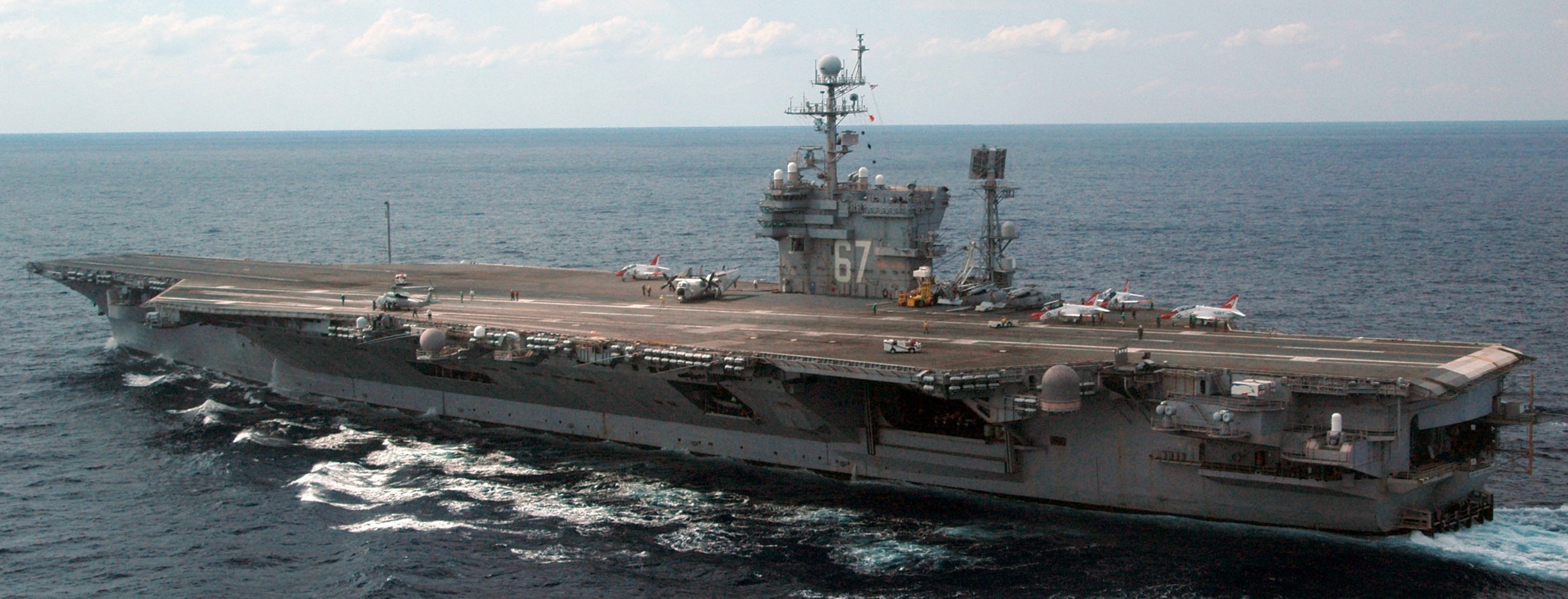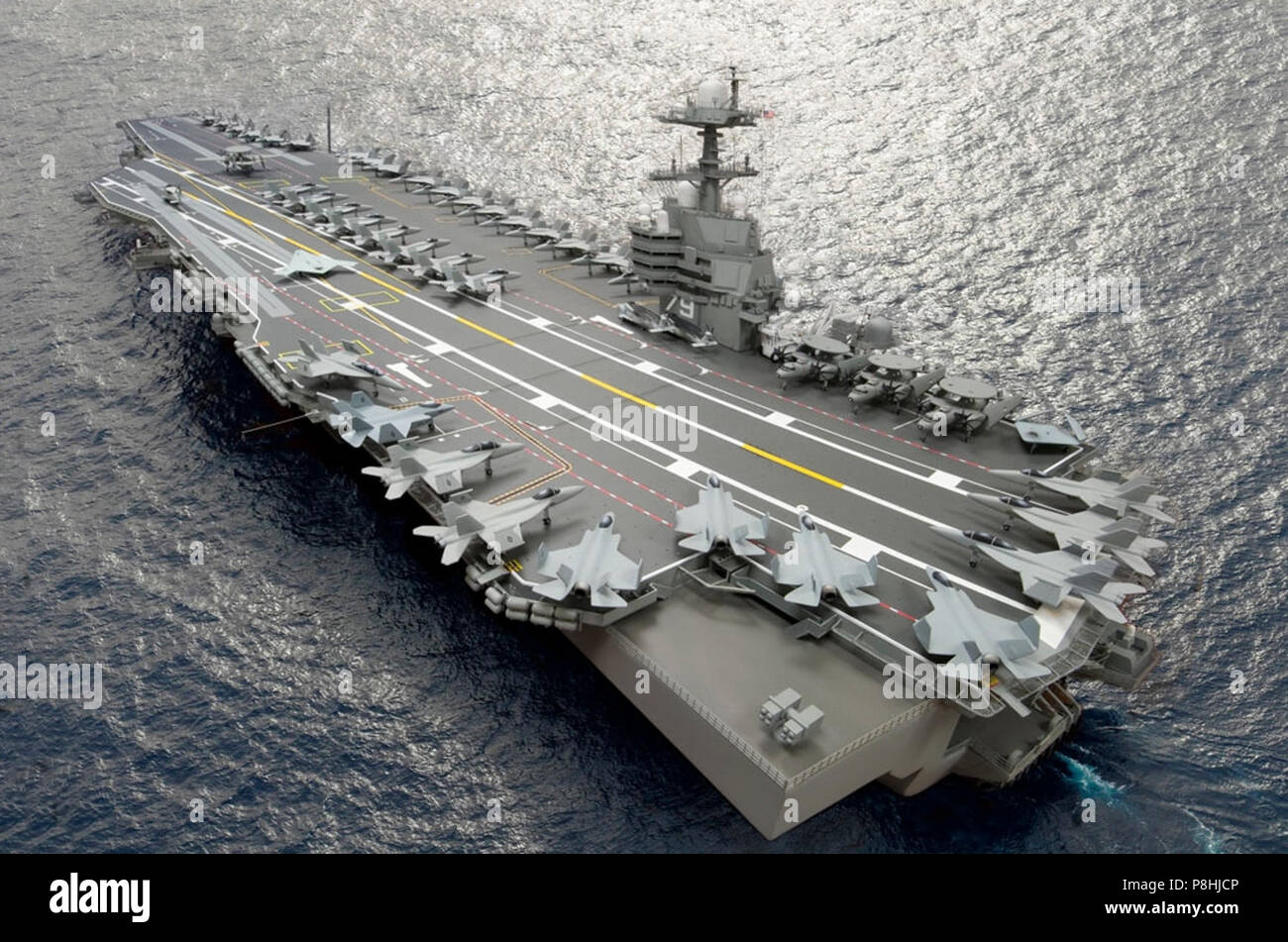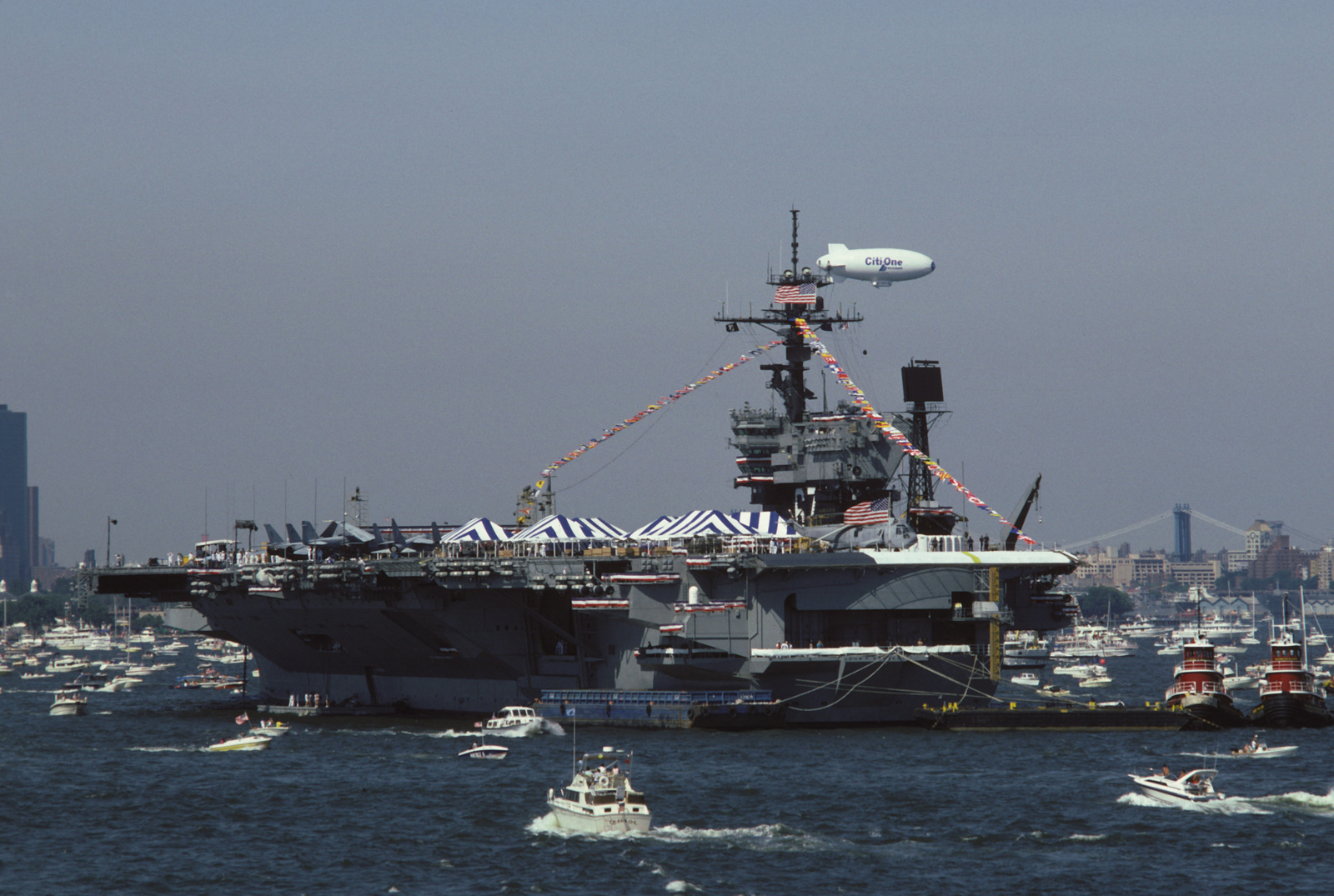Jfk Aircraft Carrier - USS John F. Knedy (CVN-79) is the second Gerald R. Ford aircraft carrier built for the United States Navy. The vessel was launched on October 29, 2019 and christened on December 7, 2019.
On December 7, 2007, the 66th anniversary of the attack on Pearl Harbor, Arizona Congressman Harry Mitchell proposed naming the ship Arizona. In 2009, Arizona Congressman John Shadegg proposed naming CVN-79 or CVN-80 after Barry M. Goldwater, a United States Senator from Arizona.
Jfk Aircraft Carrier

On May 29, 2011, the Department of Defense announced that the ship would be named after the 35th President of the United States, John F. Kennedy, who served in the Navy during World War II.
Uss John F. Kennedy (cv 67) Aircraft Carrier Waiting For Disposal At The Philadelphia Naval Shipyard. Status: Stricken Stock Photo
She will be the third Navy ship to be named for a member of the Knedy family and the second aircraft carrier named John F. Knedy, after the USS John F. Knedy (CV-67), which served from 1968 to 2007.
On January 15, 2009, Huntington Ingalls Industries (HII) was awarded a $374 million contract to perform design and engineering work for Northrop Grumman Shipbuilding's John F. Knedy.
On February 25, 2011, the Navy held a groundbreaking ceremony at Northrop Grumman in Newport News, marking the official start of construction for the John F. Kennedy.
John F. Kennedy was scheduled to end in 2018. It was extended to 2020 after Defense Secretary Robert Gates announced in 2009 that the program would move from a five-year construction plan to a "sustainable" budget. ". road
File:an Aerial View Of Ships Of The Aircraft Carrier Uss John F. Kennedy (cv 67)
In September 2013, the General Accounting Office requested a delay in the detailed contract for the John F. Kennedy construction until the issues were resolved. The Navy and the Department of Defense rejected the proposal. The Navy faces technical, design and engineering challenges to complete the Gerald R. Ford, including creating systems before proving they are mature enough to meet required dates. Gerald R. Ford's earnings rose 22% to $12.8 billion and could see further growth due to strong technology systems and an uncertain construction challenge. The impact is part of the Navy's plan to conduct testing of the main system concurrently with initial operational testing. What can be done to determine whether Ford's carrier-level purchase is supported, the GAO said, is to conduct a cost-benefit analysis of the required costs and associated costs.
As part of the traditional ceremony, the initials of ship donor Caroline Knedy, daughter of President Knedy and former donor John F. Knedy, were welded into place.
On February 28, 2018, Huntington Ingalls Industries announced that its Newport News Shipbuilding division has completed 70% of the buildings needed to complete the John F. Knedin.

On April 30, 2018, Huntington Ingalls Industries reported that it was "75% constructed and more than 40% complete". On May 3, 2018, Huntington Ingalls President and CEO Mike Petters announced that John F. Knedy will be released on October 29, 2019, three months ahead of schedule.
Remembering Jfk: Uss Saratoga Played Prominent Role In Prominent Jfk Moment
On May 30, 2019, a 588-ton bridge and island was installed. Beneath the island, Captain Todd Marzano placed his wings and the first Knedy Dollar, donated by Caroline Knedy, was placed in place. This is Rear Admiral Brian Antonio (Chief Program Officer, Aircraft Carriers, Ret.)
In each he placed a coin inscribed with President Knedy's words and part of the ship's mission. Caroline couldn't be a perst, so the crane operator was ordered over the radio to raise the island and place it in a ceremonial line and bury it in the shape of a ship.
The ship was 100% full on July 11, 2019, with the upper runway and launch area, including two forward-facing boats.
On October 1, 2019, the ship's crew was first awarded the Operations Control Unit (PCU) John F. Knedy in a ceremony aboard the ship at Newport News Shipbuilding.
File:uss John F. Kennedy (cv 67) Bow Shot 1991.jpeg
On October 29, 2019, the Newport News Shipyard's John F. Kennedy dry dock began flooding. The process of filling the dry dock with more than 100,000,000 US liters (380,000,000 l; 83,000,000 imp gal) of water took place over several days, the first time the ship had been filled with water. to be in the water. Once the ship was in the water, it was moved west of the dry dock.
The vessel was commissioned on December 7, 2019 by Caroline Knedy, who returned the same glass that the first John F. Knedy (CV-67) did when she was christened 52 years earlier.
In November 2020, Huntington Ingalls Industries in Newport News, Virginia received a nine-figure contract for a previously awarded CVN 79 "delivery of one class with the Joint Strike Fighter (F-35C)."

According to the contract, a "single stage delivery system" was approved to meet Navy requirements and congressional mandates to enable the 79th CVN to operate and deploy the Joint Strike Fighter (F-35C). before completing that position. The reduction is available as provided in Section 124 of the National Defense Authorization Act for Fiscal Year 2020 (Public Law 116-92). ”USS John F. Kennedy (CV-67) continues during a wing acquisition in the northern Puerto Rico area of operations, December 10, 1996. Photo courtesy of Naval and Heritage Command, NH 106553-KN.
How Problems With Carrier Ford Helped Navy Build Carrier Kennedy
USS John F. Kennedy (CVA-67), the first of her class and the last conventional aircraft carrier built by the United States Navy, was launched at Newport News Shipbuilding and Dry Dock Company, Virginia, on September 7, 1968 with Captain Earl P. Yates is the director. The ship is named after the 35th president of the United States, John F. Kennedy. After intensive training at Guantanamo Bay, Cuba, JFK went to Norfolk, Virginia, where he received extensive repairs in preparation for a long-term deployment. On April 5, 1969, the aircraft was operating in Mediterranean waters as the flagship of Rear Admiral Leroy W. Swanson, commander of the 2nd Transport Division. During the deployment, John F. Kennedy participated in exercises with the Italian and French navies. The Soviet threat. He returned to the States four days before Christmas 1969. He remained in Norfolk until the late 70's.
During his military service in 1970-71, John F. Kennedy visited Athens three times, Naples twice, Palma de Mallorca, Spain and Malta twice. It marked the ship's participation in several NATO exercises in the North Atlantic. Originally intended to last only two weeks, the expedition ended up traveling 35,127 kilometers across the Mediterranean Sea in six months. Returned to Norfolk on March 1, 1971. Used most of the boat. Annual training at Cape Virginia. On 1 October, John F. Kennedy received a new commander, Captain Robert H. Gormley, after two months of relief for USSAmerica (CVA-66) in Rota, Spain, where he rejoined the Sixth Division. During the remainder of 1972, JFK and his air wing participated in various international exercises, highlighted by NATO's Force Express exercise, where he crossed the Arctic Circle for the first time. After training, John F. Kennedy returned to Norfolk for refit, arriving on October 6, 1972. The ship remained in low availability for the remainder of the year.
After the reorganization on January 5, 1973, John F. Kennedy was sent to Southeast Asia, but after the Paris Peace Agreement, his orders were changed to European waters. JFK departed Norfolk on April 16, 1973, and arrived in Rota on April 25, removing USS Intrepid (CVS-11). The ship spent the next five months of 1973 working with the Sixth Fleet. Her ports include Barcelona and Palma, Formia, Italy, Augusta Bay, Gaeta, Souda Bay, Rhodes, Athens and Livorno. On Oct. 4, John F. Kennedy once again crossed the Arctic Circle during NATO's nine-day Swift Move exercise, bringing together a force of more than 20,000 personnel, 34 ships, and 250 land and naval aircraft. . Canada, Netherlands, Norway, Denmark, Germany, UK and USA. JFK initially headed home after the training, but on October 6, 1973, another crisis broke out in the Middle East when Egyptian and Syrian forces attacked Israel during the Yom Kippur War. Accordingly, John F. Kennedy was escorted by the guided-missile frigate Dale (DLG-19), the guided-missile destroyer Richard E. Byrd (DDG-23), and the Sarsfield (DD-837), supported by the oiler Caloosahatchee (AO- 98 ). 100 kilometers west of Gibraltar, arriving at the site was taken to take measures to solve the problem. Despite the ceasefire agreement, John F. Kennedy remained in the area as the conflict continued. On November 17, the Sixth Fleet returned to regular alert mode, the day after John F. Kennedy was ordered home. On December 1, the ship returned to Norfolk.
In 1974, John F. Kennedy underwent extensive renovations in Norfolk
Flight Deck View Of Uss John F. Kennedy. Aircraft Lift Lowered To Hanger Level Stock Photo
Sig p365 tulster holster, sig p365 iwb holster, sig holsters p365, sig p365 sas holster, sig p365 xl holster, sig p365 hybrid holster, appendix holster sig p365, safariland holster sig p365, sig p365 belt holster, sig p365 holster, sig p365 purse holster, sig sauer p365 holster
0 Comments